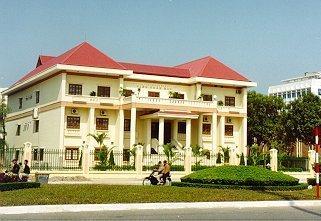Lecturer 1: Jürgen JOST, Max Planck Institute for Mathematics in the Sciences
Course title: Geometric, topological and analytical methods of data analysis
Abstract: This series of lectures will introduce a variety of mathematical approaches for finding and exploiting structure in data. Topological data analysis investigates how topological invariants based on the proximity of data points change as the scale of resolution varies.
Manifold learning can detect intrinsically low-dimensional smooth data sets that extrinsically may span a huge number of dimensions. Spectral analysis and discrete invariants can reveal qualitative properties of networks. When relations involve more than two items, as for instance in chemical reaction networks, we can model that by simplicial complexes or hypergraphs, and we shall also develop the corresponding mathematical methods systematically.
Lecturer 2: Nihat AY, Max Planck Institute for Mathematics in the Sciences.
Course title: Artificial Neural Networks and Machine Learning: Theoretical Foundations.
Abstract: This course will provide a review of core ideas within the fields of neural networks and machine learning. It will be structured in line with the historical developments of artificial intelligence. Particular emphasis will be but on various mathematical concepts and methods related to universal approximation, natural gradient, deep neural networks, statistical learning theory, and support vector machines.
Lecturer 3: Hồng Vân Lê, Institute of Mathematics of ASCR, Czech Republic
Course title: Mathematical foundations of Machine Learning
Abstract: Machine learning is an interdisciplinary field in the intersection of mathematical statistics and computer sciences.
Machine learning studies statistical models and algorithms for deriving predictors and meaningful patterns from empirical data.
Machine learning techniques are applied in search engine, speech recognition and natural language processing, image detection, robotics etc. In our course we discuss mathematical models of learning mathematical principles in supervised learning, unsupervised learning and Baysean machine learning. The course consists of six lectures which cover the following topics:
mathematical models of supervised learning and unsupervised learning, generalization ability of machine learning, support vector machine,
kernel machine, neural networks and Bayesian networks.
Recommended Literature:
1. S. Shalev-Shwart and S. Ben-David, Understanding Machine Learning:
From Theory to Algorithms, Cambridge University Press, 2014
2. Sergios Theodoridis, Machine Learning A Bayesian and Optimization Perspective, Elsevier, 2015
Lecturer 4 : Guido Montúfar, Max Planck Institute for Mathematics in the Sciences & UCLA
Course title: Wasserstein Information Geometry for Learning from Data
Abstract: This lecture will provide an introduction to Wasserstein Information Geometry for learning from data. This is an active area that combines Information Geometry and Wasserstein Geometry in order to capture two important aspects of learning: the geometry of the learning model and the geometry of the data under consideration. First we introduce Information Geometry, which emphasises the geometry of the learning model, based on natural notions of invariance with respect to transformations of the hypotheses and their parametrisation. Then we introduce Wasserstein Geometry, which departs from the geometry of the data space. We discuss consequences, computation, applications, and topics of current research.
Lecturer 5: Duc Hoang LUU, Institute of Mathematics, VAST & Max Planck Institute for Mathematics in the Sciences
Course Title: Rough paths, signatures in data streams
Abstract: In the recent years, the signature first studied by K.T. Chen has gained attention in the mathematical and statistical community due to its connection with T. Lyons' theory of rough paths. It also provide new tools for analysing and describing these data streams and extracting the vital information. This course aims to illustrate how effectively the information obtained from the signature of data can be used to classify the data, based on which useful predictions could be made.
The course presents first the fundamental application of signature in integration theory and rough differential equations. The second part shows examples in finance and machine learning, where the signature method transforms raw data into a set of features used in machine learning tasks, thus representing a non-parametric way for extraction of characteristic features from data.
Van Hau NGUYEN, Hung Yen University of Technology and Education, Vietnam
Course title: Introduction to Machine Learning with Python
Abstract: This course provides the basics of machine learning using a well-known programming language Python. In particular, we will address three parts: First, you will be introducing about Machine Learning in general, i.e. where, why and when ML is used. Second, you will get an overview of Machine Learning topics such as supervised vs unsupervised learning, and Machine
Learning algorithms. Third, you will be providing some Python libraries (e.g. scikit-learn) for Machine Learning.
Throughout practice with real-life examples of Machine learning, the learners will be able to: use Python and its libraries to implement Machine learning algorithms, e.g. regression, classification, clustering; and apply machine learning algorithms to some domains, for example cancer detection, predicting economic trends, recommendation engines, etc.
Viet Hung PHAM, Institute of Mathematics, VAST, Vietnam
Course title: Preparation course on Statistics
Abstract: This course aims to provide students with basic knowlegde in probability and statistics in order to have better understanding of their applications in the following courses on data science and machine learning. We will review important topics on: probability space, random variables, limit theorems, point estimation with Maximum Likelihood Estimation technique, regression, clustering and time series analysis.


